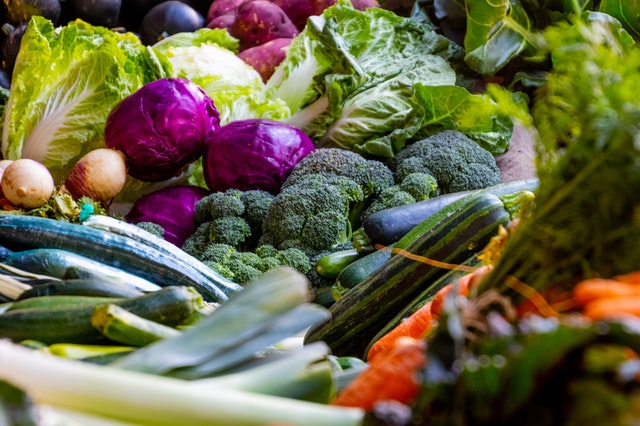To understand anti-nutrients we first need to understand nutrients. Nutrients are substances in food that our bodies need to grow and thrive. Macronutrients are needed in larger amounts: protein, carbohydrate, and fat. Micronutrients including vitamins and minerals are just as important as macronutrients; we simply need them in smaller amounts. Think of nutrients as building blocks, with each block a crucial component necessary to build a strong structure. Anti-nutrients are a natural part of some plant foods that the plants have developed to protect themselves from being eaten by insects and damaged by infections. While helpful for plants, these anti-nutrients can decrease the absorption of some nutrients in our body. However anti-nutrients don’t decrease the amount of nutrients stored in our body, or somehow cause more nutrients to be excreted. In fact, some anti-nutrients also provide health benefits!
What are the anti-nutrients?
Scientists have identified 6 classes of anti-nutrients:
- Glucosinolates are found in cruciferous vegetables like broccoli, Brussels sprouts, kale and cabbage and can block our body’s absorption of iodine which is an essential mineral for thyroid health. People with hypothyroidism are most susceptible to decreased amounts of iodine in their diet. However, glucosinolates are also well-researched antioxidants that are associated with decreased risk of some types of cancer. Human research studies do not show any negative health effects of consuming glucosinolates in cruciferous vegetables unless someone is already iodine deficient.
- Lectins in whole grains, peanuts, soybeans, and legumes such as lentils and kidney beans can decrease the absorption of calcium, iron, phosphorus, and zinc. Lectins are much more prevalent in raw or undercooked foods and can bind to cells that line the digestive tract where they may disrupt the beneficial bacteria in the gut. Lectins are also phytochemicals that provide health benefits.
- Oxalates in dark green leafy vegetables like spinach, kale, and beet greens; almonds and tea can prevent some of the absorption of calcium. Oxalates are the reason why we absorb less calcium from green leafy vegetables than we do from dairy products. We absorb about 30% of the calcium in milk, but only about 5% of the calcium in spinach.
- Phytates are found in whole grains, wheat bran, rice bran, brown rice, seeds, legumes such as pinto and navy beans, soybeans, and peanuts. Phytates can also decrease the absorption of iron, zinc, magnesium, and calcium.
- Tannins in tea, coffee, and legumes decrease iron absorption.
- Saponins in legumes and whole grains can block overall nutrient absorption. However, saponins are also beneficial phytochemicals with anti-inflammatory, anti-bacterial, and immune-boosting effects.
Are anti-nutrients something new?
Anti-nutrients are a natural part of some plant foods, and while you might not have heard much about them before, they are not a new phenomenon.
Should I worry about the impact of anti-nutrients?
- Glucosinolates: Include iodine-rich seafood such as shrimp, cod, and tuna in your weekly food choices. Seaweed is also a good source of iodine. Iodized salt is the most widely used strategy to manage iodine deficiency.
- Lectins: Cooking, especially boiling, stewing, or even soaking in water for a few hours removes or inactivates the vast majority of lectins in legumes. Sprouting can also reduce the amount of lectins in whole grains, so you might choose sprouted wheat bread instead of regular wheat bread.
- Oxalates: Steaming dark green leafy vegetables can decrease the oxalate content by 5-53% and boiling decreases oxalate content by 30-80%.
- Phytates: Soaking, fermenting, and sprouting helps reduce the amount of phytates available in foods. Unless you consume whole grains, rice, or legumes raw, the amount of phytates in these foods is not a concern.
- Include a variety of different foods and types of foods in each meal for the highest nutrient absorption. For example, iron in dark meat chicken and red meat is absorbed at a much higher rate than the iron in dark green leafy vegetables. Vitamin C increases iron absorption from both animal and plant foods, so you might add grapefruit slices to a leafy green salad or drink orange juice with breakfast cereal fortified with iron.
- Take multivitamin/mineral supplements with water and not coffee or tea which can decrease the absorption of iron.
I thought eating more plant foods was healthy; now I hear about anti-nutrients. Should I stop eating plant foods?
There are numerous health benefits to eating more plant foods: fiber, lower amounts of unhealthy types of fat, fewer calories, important sources of phytochemicals, and antioxidants that promote health. Food recommendations to improve health overwhelmingly emphasize the importance of whole grains, vegetables, fruit, nuts, seeds, and legumes in daily food choices.
Author: Lynn Grieger, RDN, CDE, CPT, CHWC
Copyright foodandhealth.com, reprinted with permission.

